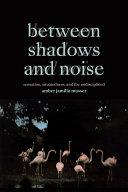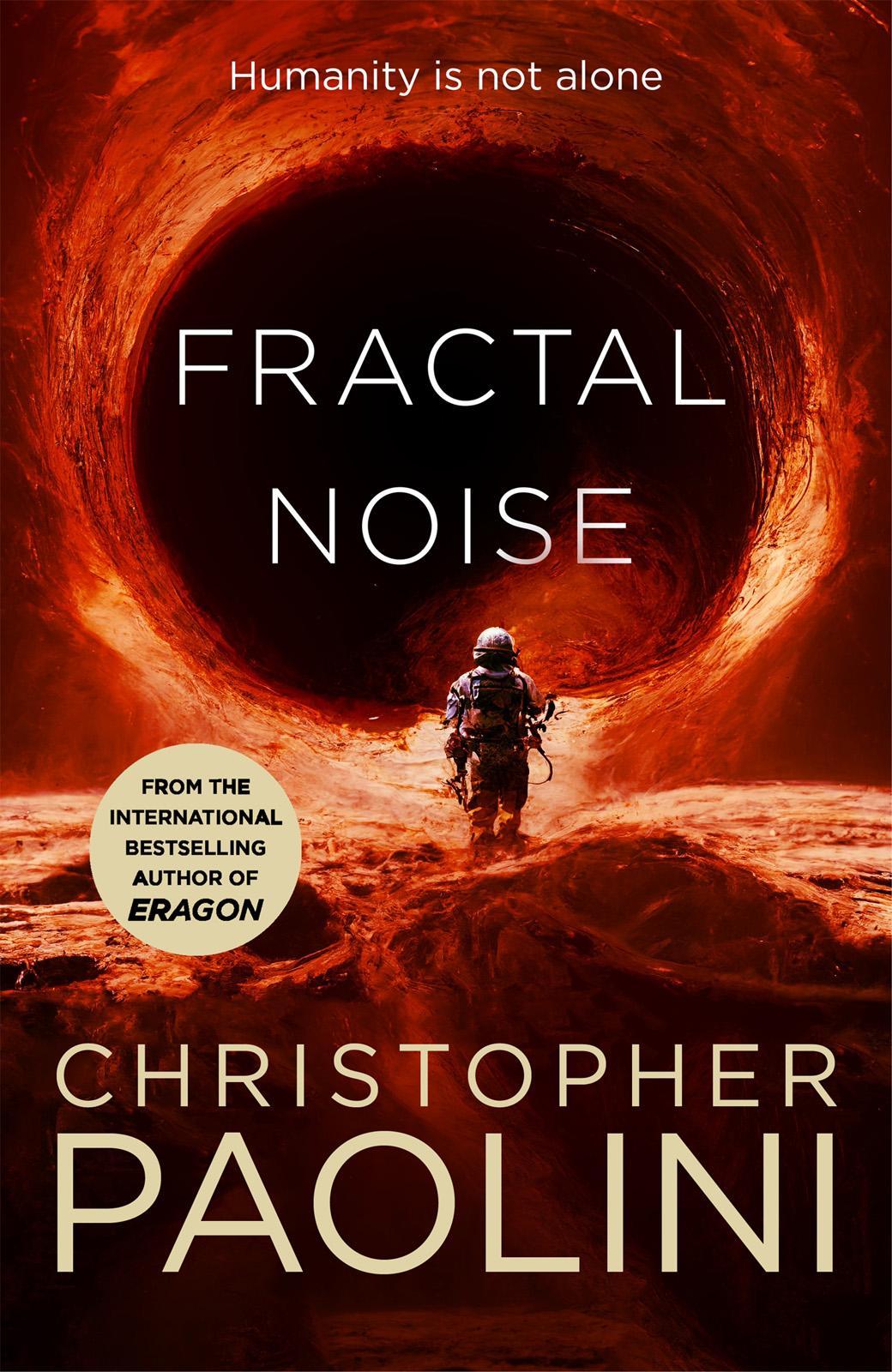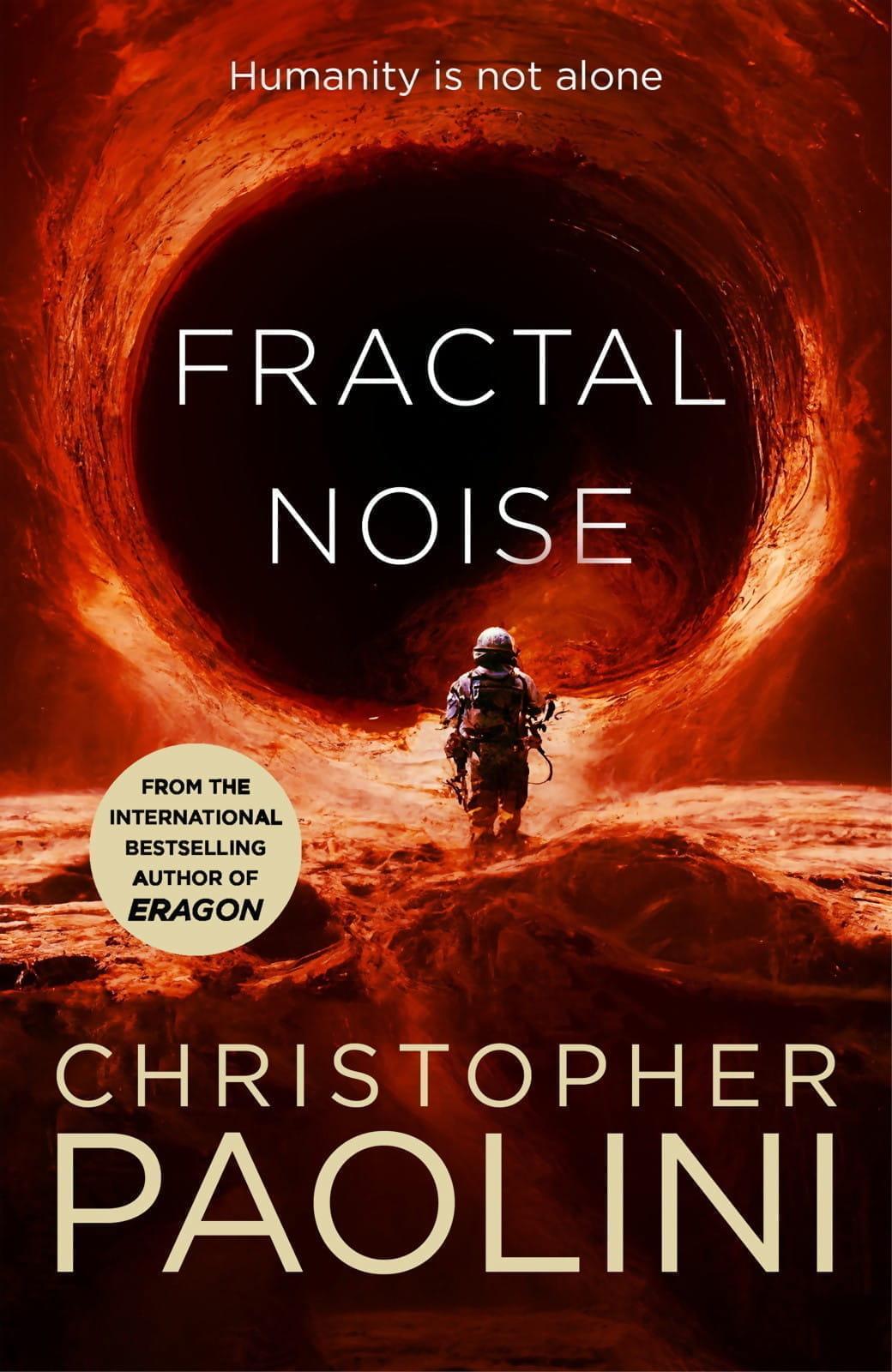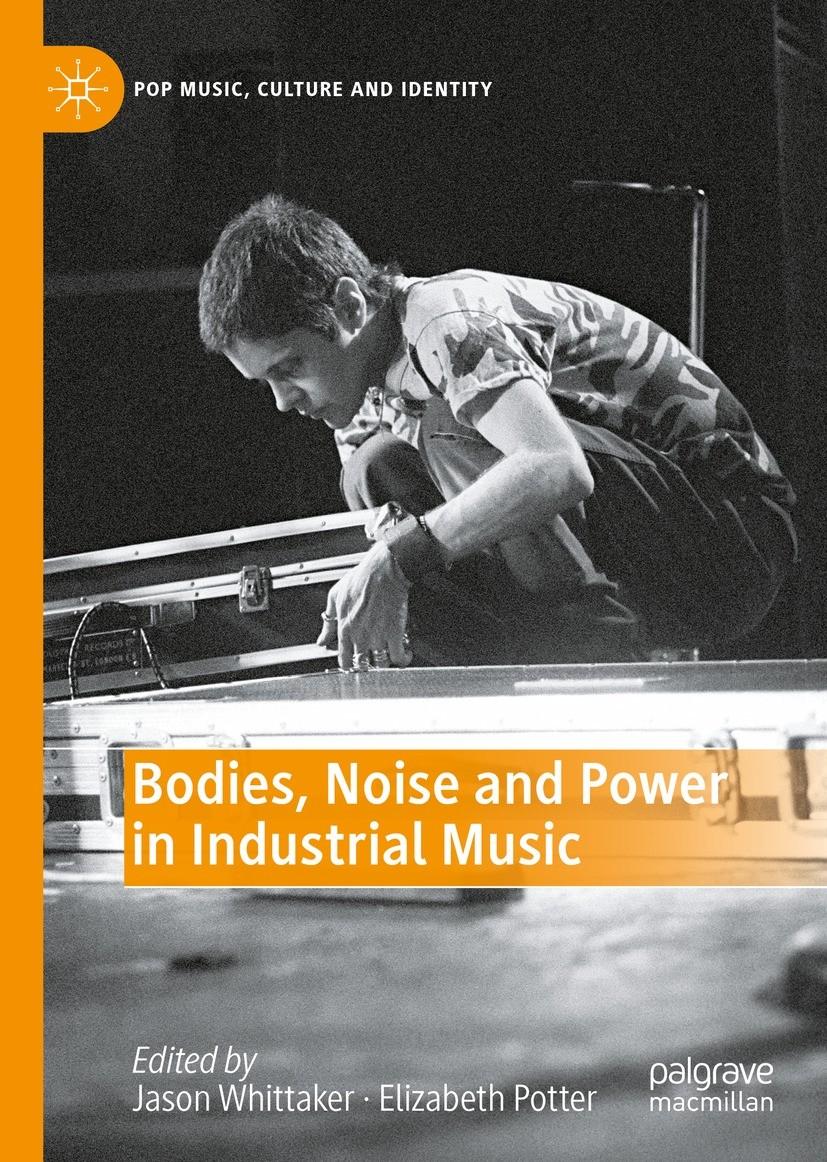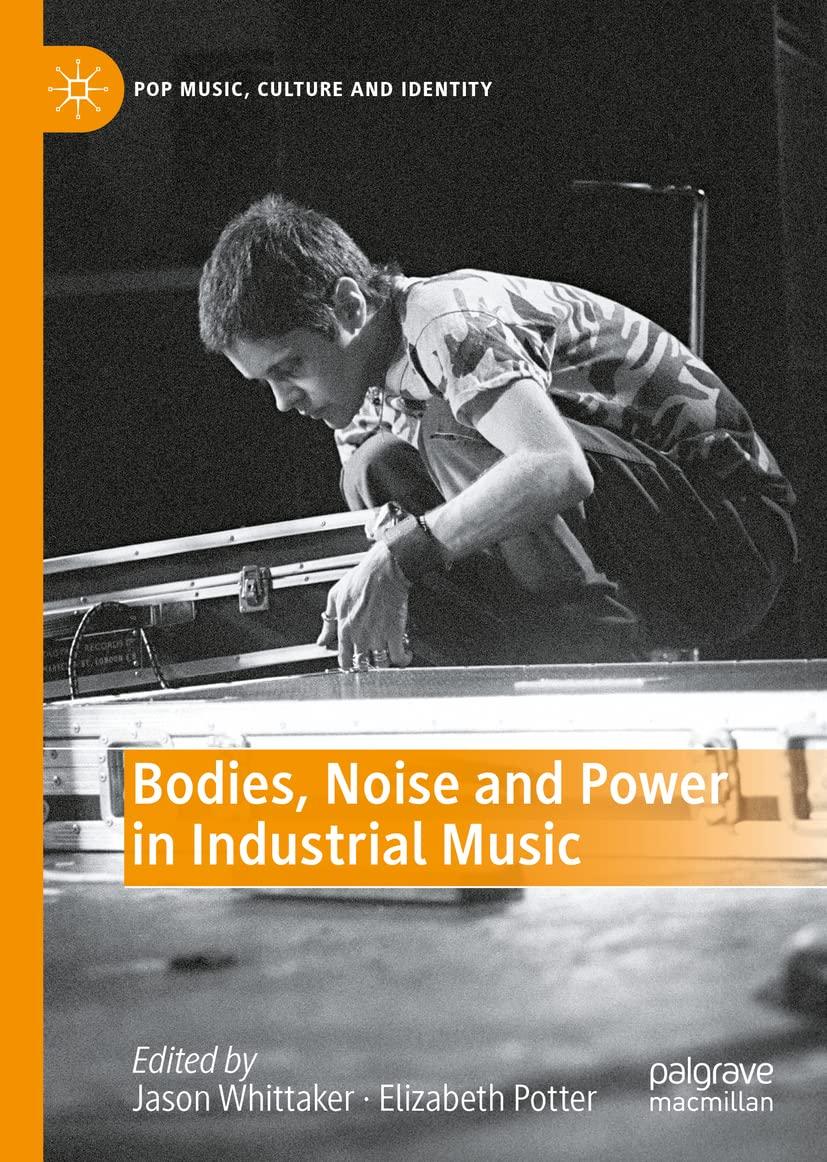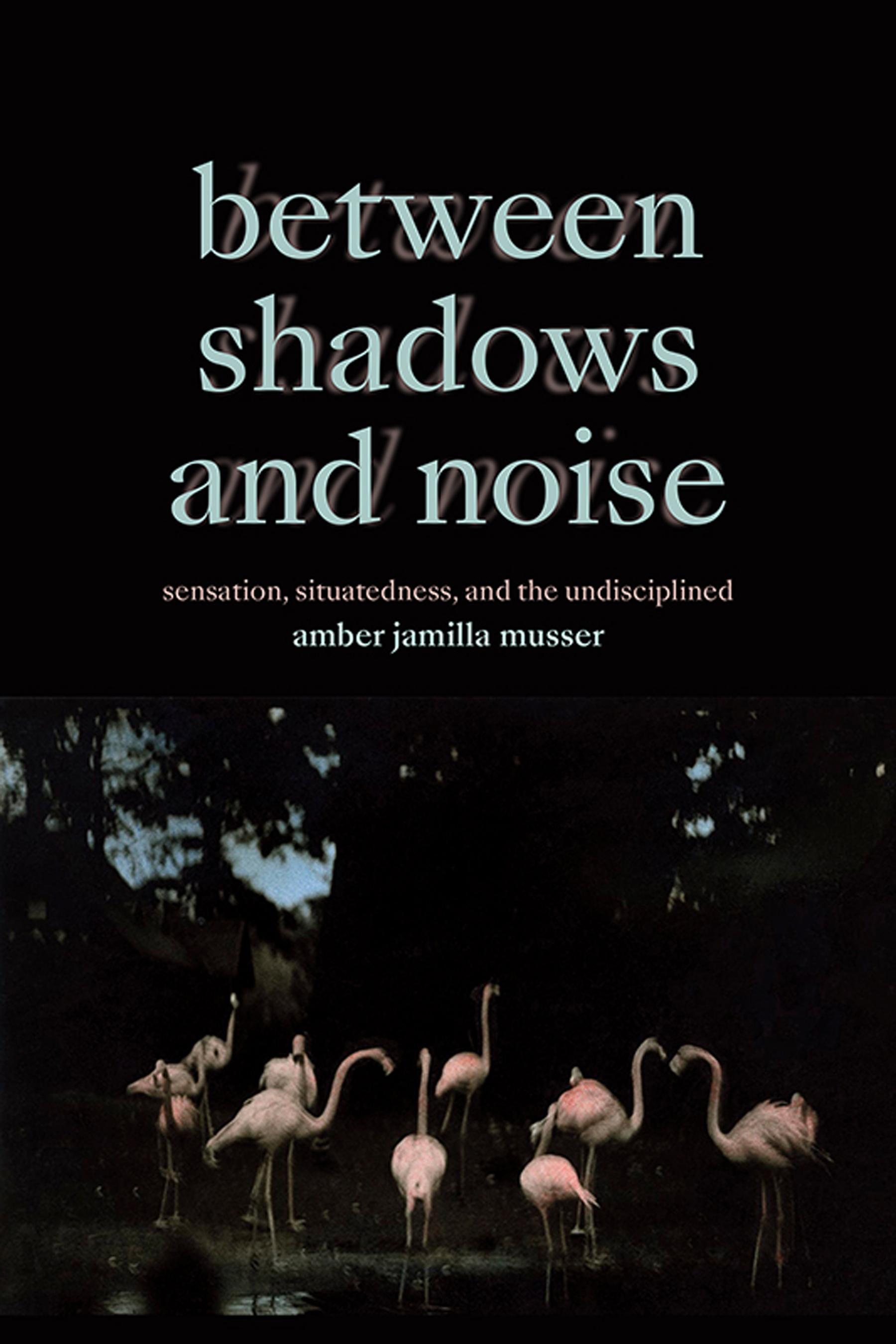between shadows and noise between shadows and noise
sensation, situatedness, and the undisciplined amber jamilla musser
Duke University Press Durham and London 2024
© 2024 duke university press. All rights reserved
Printed in the United States of America on acid-free paper ∞ Project Editor: Livia Tenzer | Designed by Aimee C. Harrison Typeset in Garamond Premier Pro and SangBleu Kingdom by Westchester Publishing Services
Library of Congress Cataloging-in-Publication Data
Names: Musser, Amber Jamilla, author.
Title: Between shadows and noise : sensation, situatedness, and the undisciplined / Amber Jamilla Musser.
Description: Durham : Duke University Press, 2024. | Includes bibliographical references and index.
Identifiers: lccn 2023020971 (print)
lccn 2023020972 (ebook)
isbn 9781478030096 (paperback)
isbn 9781478025832 (hardcover)
isbn 9781478059097 (ebook)
Subjects: lcsh: Feminist theory—Political aspects. | Feminist theory. | Imperialism. | Black people—Race identity. | Queer theory. | Sensuality. | bisac: social science / Black Studies (Global) | social science / Feminism & Feminist Theory
Classification: lcc hq1190 .m895 2024 (print) | lcc hq1190 (ebook) | ddc 305.4201—dc23/eng/20231011
lc record available at https://lccn.loc.gov/2023020971
lc ebook record available at https://lccn.loc.gov/2023020972
Cover art: Ming Smith, Flamingo Fandango (West Berlin) (painted), 1988. Archival pigment print, 24 * × 36 in. © 2023 Ming Smith / Artists Rights Society (ARS), New York.
In their own special ways, Thomas, Carrie, and Ankur are the architects of my luminous new life. Thank you for the love and abundance.
This page intentionally left blank
Contents
Acknowledgments, ix
introduction Body Work, 1
chapter one Us, the Uncanny, and the Threat of Black Femininity, 21
chapter two Inside Out. Shango and Spectacles of the Spirit, 42
chapter three Noise and the Body-Place. This ember state and the Critical Encounter, 59
chapter four On the Brink. Approximation, Difference, and Ongoing Storms, 76
chapter five Tamarind, Metabolism, and Rest. Making Racialized Labor Visible, 94
conclusion Inflammation. Notes from the Front, 112 Notes, 131 Bibliography, 157 Index, 175
This page intentionally left blank
Acknowledgments
just as this book sits at the intersection of the personal and the scholarly, so too do these acknowledgments. This book was completed amid extremely difficult circumstances; yet writing provided a necessary lifeline for me. This book offered an opportunity to dwell on sensual delights and to think and feel while I rebuilt my being from the inside out. It is only because of the deep generosity of my friends, family, and community that I am here and that this book become real.
My brother, Thomas, tangibly offered me an opportunity for more life and he and his family, Ashley and Eleanor, encircle me with love. There is nothing like seeing a baby grow into a toddler to feel inspired and curious and to understand the depth of joy and inner radiance that come from living with purpose: “We did it!” My parents, John and Camille, stayed with me for many weeks—cooking, cleaning, and entertaining me. We watched the Celtics almost go all the way and wandered the summer gardens and outdoor concerts of Ditmas Park in style. Much love also to my more extended Musser and Saunders family.
Carrie Gleason makes sure that I am truly seen. Her unwavering constancy, humor, immense advocacy, and excellent organizational skills helped me find a horizon of steadiness and possibility. More than the pragmatic, I cherish her ability to insist on a future filled with an abundance of delight and love. I extend my deepest gratitude for her determination to keep me enmeshed in
the beauty and realness of the world and her willingness to read and discuss draft after draft.
Ankur Ghosh has been a beacon of inspiration, comfort, and joy. He bought fake plants (real ones not allowed); he brought jelly beans and chocolate; he decorated hospital rooms; he moved me from one apartment to another; he ran copious errands and made me smile. Kadji Amin is a deeply cherished caring and kind friend. His daily care and our various adventures have been their own forms of salvation. Michael Gillespie is a delight whose care extended into daily invitations to new music. Jasbir Puar has been the best neighbor and friend the West Side can offer. Niamh Duggan and Bahia Munem have prompted many tantalizing brunch conversations. Maureen Catbagan has been a collaborator and friend extraordinaire—especially when they assured me that the no eyebrow look was hot. Stephanie Clare, Larissa Chernock, Alison Macdonald, Chitra Ramalingam, and Isaac Nakhimovsky have taught me that most acts of friendship consist of being willing to listen and to talk about things that are not necessarily what is going on and to keep sharing one’s life. Avgi Saketopoulou sent me gold eye shadow and organized a private motorcycle pride parade. Many thanks also to Jordy Rosenberg, Paige McGinley, Mel Micir, Fannie Bialek, Samita Sinha, Jayna Brown, Tavia Nyong’o, Moon Charania, Beth Freeman, J. Kehalauni Kauanui, Nasser Zakariya, Eng Beng Lim, Karen Tongson, Jasmine Mahmoud, Jordan Stein, Shanté Smalls, John Andrews, Yxta Murray, Annie Howell, Jennifer Nash, Jina Kim, Britt Russert, Lyndon Gill, Kyla Wazana Tompkins, Aimee Bahng, Karma Chavez, Kiri Mah, Laurie Marhoefer, Molly Caldwell, Kandice Chuh, Jessica Rankin, Pacho Velez, Ben McKean, Alex Horowitz, Amy Carson, Arwen Griffith, Emily Bolton, Danny Fox, and Risha Lee for the ongoing kindnesses of friendship.
I do not take for granted the wealth of care that I received from nyu Langone Health. Deep thanks to the teams of nurses, nurse practitioners, doctors, physician aids, physical therapists, nutritionists, and custodians who tended to me on kp 12, kp 16, the bmt clinic, and various other outpatient units. I especially thank Dr. Hay, Dr. Saint-Fleur, Devynn Emory, Jay Swanson, Danielle, and Greg for helping me understand the strength, hope, and miracle of a bone marrow transplant. I am also extremely humbled by the generosity of those who contributed to the GoFundMe set up by Jasbir and Carrie so that I was relatively unburdened by financial anxiety. The shock of the immense kindness put forth is ongoing and I strive to live in that communal orientation to the world and keep paying it forward. I am also grateful to everyone who
x Acknowledgments
took the time to send me good wishes and who kept me within their hearts during all of this. And, finally, I am grateful to the loved ones of my caregivers whose labor gave them the capacity to extend care—I am especially thankful for the flexibility of Alan and Devon Cage. I recognize the multiple fortunate aspects of my circumstances.
I wrote this book between 2018 and 2023. The ideas began to germinate while I was teaching at Washington University in St. Louis. I thank my wonderful colleagues and friends there: Paige McGinley, Mel Micir, Rebecca Wanzo, Bahia Munem, Jasmine Mahmoud, Rhaisa Williams, Pannell Camp, Diane Lewis, Jean Allman, Andrea Friedman, Trevor Sangrey, Anika Walker, Cynthia Barounis, and Shefali Chandra. Much of the research for this book took place while I had the fortune of working in the American Studies department at George Washington University. Thank you for being a convivial space for conversation and thought: Nicole Ivy, Libby Anker, Gayle Wald, Melanie McAlister, Tom Guglielmo, Robert McCruer, Joe Baez, Ro Carson, and G. J. Servillano. I am especially grateful to Mona Azadi for taking on the administrative burden of dealing with my unusual reimbursements for learning alternative cosmologies. This book was completed as I began working at the cuny Graduate Center. I extend deep thanks to Kandice Chuh and David Olan for figuring out creative ways for me to navigate the institution in illness. My students in “Black Feminisms and the Flesh” and “Black Performance, Black Visuality,” were excellent interlocutors; Ben Krusling was a gem of a research assistant. I also thank the Graduate Center for supporting reproduction of artwork in this publication.
I am also grateful for other intellectual forums which benefited the book. I thank Malik Gaines and Hentyle Yapp for our brief, but productive, writing group; the Black Feminist Working Group of Social Text Vanessa Agard-Jones, Aimee Meredith Cox, and Jayna Brown—for stimulating conversations; the Black Atlantic Ecologies Group at Columbia—Vanessa AgardJones, Marissa Solomon, Anna Arabindan-Kesson, Jayna Brown, Aimee Meredith Cox, Alyssa James, Julie Livingston, Chazelle Rhoden, and Sonya Posmentier—for multidisciplinary thought explorations. The Keywords for Gender and Sexuality Studies Feminist Collective of Aren Aizura, Aimee Bahng, Karma Chavez, Mishuana Goeman, and Kyla Wazana Tompkins and the many writers, thinkers, and activists of that volume were also instrumental to my thinking, as were my coeditors of the “Care and Its Complexities” special issue of Signs, Linda Blum and Martha Fineman. I am also grateful to the asap organization—specifically the excellent motherboard of 2021–2023—for
Acknowledgments xi
their support and thoughtfulness. I also owe many thanks to the editors of the Brooklyn Rail who gave me the opportunity to refine my art writing, interview artists and thinkers, and explore in a new genre.
Thanks to Elizabeth Ault for her work on this manuscript. I have been in conversation with Elizabeth since 2016 about the possibility of this collaboration and I could not have asked for a better set of eyes to push this project where it needed to go. She found excellent reviewers, whose comments helped me refine and think and made this book what I always imagined it could be. Thanks also to Benjamin Kossak and everyone else at Duke University Press for producing this amazing, beautiful book. Special gratitude to Josh Rutner for thorough indexing (and extra eyes during proofing).
Intellectually, this book emerges from conversations I have been having about art over the past several years. I have been thinking about Samita Sinha’s work in several places: in particular, a 2019 asa panel on queer femininity with Christina Leon and Summer Kim Lee, and workshops at Danspace Project in New York. For the invitations to share my thoughts on tamarind and rest, I am grateful to audiences at the University of Chicago, including the 2022 “After Affect” conference and the history of science working group in 2021; the Future of American Studies Institute in 2021; and the Disability and Debility Working Group at the University of Pennsylvania. For my work on Jordan Peele’s Us, I am grateful to the Gender Studies department at Queens University. I also thank the attendees of the “Sticky Films Conference” put together by the Configurations of Film research group at Goethe Universität at Frankfurt am Main for their wonderful questions and hospitality in 2023, and Michael Gillespie for the copious references to Black horror. For hearing a late version of the research on Allora & Calzadilla, I thank my fellow participants at Northwestern University’s “Object Relations” conference in May 2023, who offered insights into the project as a whole. I am also grateful to share work related to broader themes of the project with the Center for Research in Feminist, Queer, and Transgender Studies at the University of Pennsylvania in 2022, ici Berlin in 2021, Stanford University’s Arts and Justice series in 2021, and Yale University’s Religion and American Excess conference in 2021.
Introduction Body Work
Against the waning sun , you can only see the blurred silhouettes of surrounding trees; in the foreground, a flamboyance of flamingos. They are pink elegance: long curving necks and legs ready to strut. With its saturated blacks and moody bursts of color, Ming Smith’s 1988 photograph Flamingo Fandango (West Berlin) (painted) (plate 1) makes felt what lies between shadows and noise. The background darkness (the shadows)— enfolds multiple histories and temporalities: Cold War contours, Germany on the precipice— the Berlin Wall would fall in 1989—the eighteenth-century imperial impulse underlying all zoos, and the current moment’s shifting climate, which endangers flamingos, especially in Europe.1 Beyond grounding the image spatially and temporally, I locate these shadows in the different forms of capture lurking around the flamingos: in addition to photographic apparatus and zoological enclosure, one can sense the constructedness of leisure and the fetishization of species difference that underlie the idea of the zoo itself. These material and epistemological structures are critical elements of the viewer’s perspective on these birds; they emphasize the flamingo’s presence. That these differential layers of context recede into the background does not diminish the structures of meaning that they give the photograph. On the other hand,
the noise of the flamingos, their flamboyance—in relation to their number, their loud chatter, their color, their being—makes felt the different ways that pink tropical birds might be excessive in the context of West Berlin. They seem out of place—with their behavior, volume, and preference for warmer climates—and this unbelonging is externally marked by their pink feathers, which Smith has rendered even pinker through paint: “I wanted to add color [the way] someone would put a ribbon on a dress or a lacy collar or a big belt—to embellish and make it more exciting.”2 In this context, the painted pink, which I consider the noise of the photograph, signals the flamingos’ affective and sensual milieu not their actual coloring; the pink, the noise, gestures toward uncontained excess within the photographic image.
A less idiosyncratic description of this photo graph might register it as a representation of flamingos in a zoo. From this perspective, the flamingos emerge as objects of interest to the eye as well as the mind. One might ask, for example, what this photograph might teach us about flamingos? If, as Kandice Chuh argues, “aboutness functions as an assessment of relevance,” the question of aboutness here reminds us of how evidence offered by the visual has served as the bedrock for producing hierarchies of knowledge.3 In other words, this reading of the photograph would position Flamingo Fandango (West Berlin) (painted) as a continuation of colonial and racist proj ects of capture and categorization; it would augur its significance to what the photograph makes visible. In this way, the objectification of flamingos is a residue of what we, following Jacques Rancière, might call the production of a “common sense” that would conjoin approaches to works of art with projects of knowledge extraction, thereby flattening a wide swath of sensory orientations, intimacies, and histories.4
However, even as flamingos fill the frame, the photograph is also not about them; the knowledge we gain is not about birds nor Berlin, but is about discipline, sense, and situatedness. Flamingo Fandango (West Berlin)(painted) asks us to sit with questions of perception—what are the photograph’s layers and what do they tell us about the visible and invisible aspects of the world? While Smith is best known as the sole female member of the Kamoinge collective, a 1960s group of Black photographers based in New York City, and as prolific photographer of New York nightlife, the technical elements of her work are where we see her breaking open the sutures of representation in order to reveal (and revel in) a greater unruliness.5 I began by describing how shadows and noise in Smith’s photograph structure affective and sensorial aspects of our perception, but that is only part of the story. Our ability to
attend to conditions of possibility and sense the cacophony of the flamingos are themselves indications of Smith’s rejection of the subject-object binary that discipline expects. Instead of demarcating an object (or set of objects) to be look at, parsed, or investigated, Smith presents a blurred image whose fuzzy boundaries speak to the inseparability of flamingo from “background” and which tether the viewer affectively, historically, and geopolitically to the world of the image.6 Everything, in other words, is revealed to be connected. In an interview with Janet Hill Talbert, Smith describes her method of taking photographs as intuitive, saying, “I feel my way through things, and let the spirit guide me.”7 Later, she compares photography with dancing, saying, “You have to be in the moment, you have to be right there—it’s like a form of meditation.”8 Smith’s openness and commitment to a spiritual, sensual realm is evident in the moodiness of the photographs themselves—they make something present without necessarily making claims about representation. I read Smith’s movement toward sense as reparative, as an intervention against the violent history of representation that has had pernicious effects for those who are not part of dominant groups. Namwali Serpell argues that Smith’s aesthetics cannot be separated from the knowledge that Smith largely photographed Black people and communities. She writes, “What we might call Smith’s luxuriant, deconstructive chiaroscuro also arises from her technical innovations in lighting, shutter speed, and the relative movements of camera and subject— all of which derive from immersion, an insistence on taking pictures of black people in black spaces.”9 Describing Smith’s technique in conversation with Greg Tate, Arthur Jafa also focuses on her precise manipulation of shutter speed to create blur without sacrificing form: “What’s unique about Ming is her ability to use this shutter thing to erase much of the distinction between the figure and the background, but at the same time, have it be very precise in its articulation of form.”10 Later, both Tate and Jafa agree that Smith’s photographs enable what is depicted to escape capture, signaling what they describe as her interest in Black fugitivity:
Tate: A fugitivity that’s not bound up with escape but a kind of self-illumination.
Jafa: Yeah, totally. Circular breathing. . . . The fugitivity of people willing to be free from being fucked with. You can’t fuck with what you can’t see.11
Just as impor tant as the politics of emancipation are the corporeal techniques—circular breathing— summoned by Smith’s swerve around
representation. It is in this landscape of sensation and affect that I locate the possibilities of shadows and noise.
The term shadow is used to separate “light” from “dark,” offering language not only for an optic phenomenon, but a system of value that would prioritize light, equating it with transparency, rationality, and “enlightenment,” leaving the concept of the shadow to signify something that is either deliberately hidden from view (usually in a malevolent fashion), disavowed, or repressed; think of shadow terms, governments, processes, archives. Jill Casid argues that shadows provide a contrast to organization and discipline and offers that their devaluation is a consequence of disavowing the importance of experiential knowledge. What is described as enlightened, Casid writes, is “a way of knowing . . . that offers the dream of dispelling the shadow of vulnerability to the disorganizing somatic and affective responses that hollow out the defended fortress ego to rational, disincarnate vision and its fantasy of sovereign agency over the tremulous body and its enmeshed, interdependent precarity.”12 Against the prioritization of visibility, enclosure, and sovereignty, shadows conjure irrationality, unclarity, vulnerability, and enmeshment. Orienting perception toward shadows, then, not only makes felt foreclosed entities and relations, but allows one to grapple with underlying processes of repression, disavowal, and denial and their embeddedness in ontological and epistemological systems of valuation. Alessandra Raengo provides an example of this type of analysis when she looks to shadows to displace the overdetermined (racist) sets of referents that attach to images of Black people. Shadows, she argues, confound the way that race is perceived because they highlight the importance of context and render representation weak—moving us toward other ways of making knowledge. She writes, “As a paradigm, the shadow has the ability to bring to the fore the idea that race most prominently inhabits the state and not the content of the image. The shadow is an indication of the body’s extension into its surroundings and, therefore, calls attention to the spaces and modes of interaction between bodies.”13 In other words, shadows move us away from assertions of aboutness toward relation. Shadows allow us to ask: What are the conditions of possibility at work and how might we imagine other wise?
While shadows offer information about hierarchies of valuation, what counts as noise is heavily contested. Many scholars in sound studies argue, for example, that the distinction between music and noise is reliant on hierarchies that depend on raced, classed, and gendered norms.14 Beyond its circulation in the sonic, noise is conceptually related to excess, abundance,
and the unruly. Notably, these are terms that correlate closely with racist attempts to demean and police the behavior (and, more often than not, mere existence) of people of color. As Jennifer Stoever argues, “the sonic color line invokes noise in direct connection to (or as a metonymic stand-in for) people of color, and particularly blackness.”15 Moreover, this conflation of being with noise highlights the particularly close tethering of processes of enfleshment with processes of disciplining and classification. In this way, understanding how and why something (or someone) has been designated as noisy gives us an affective and sensational vocabulary for grappling with how difference is (or is not) incorporated into a social body. Think, for example, of the socalled noisiest park in the world, People’s Park in Chengdu, China. There, noise means loudness—sounds high in decibel that occur consistently— but noise is also an atmospheric designation linking noise with other forms of toxicity and excess associated with the megacity.16 For sensing a different valence of noise, consider the 2012 murder of Jordan Davis, a seventeen-yearold Black teenager shot at a gas station in Jacksonville, Florida, for refusing to turn down the rap music in his car, or the group of Black women asked to leave a Napa Valley wine tasting tour for boisterous laughter, or Regina Bradley’s comment: “as a black woman, the bulk of my threat is associated with my loudness.”17 This list illuminates the equation of Blackness with being out of place, such that the matter of Blackness is perceived as threatening, noisy, and dangerous.18 In these instances, difference is met with nonrecognition, disorientation, and perhaps overwhelm. Noise, then, allows us to sense how questions of recognition, legibility, and comfort underlie reception. This version of noise is multisensory and attentive to the fabric of social relation. Shadows and noise, then, give us two sensory modes to index the density of representation. They disrupt univocal meaning making, forcing us to navigate its edges. While these edges are often ignored, normalized, and rendered subordinate to the frame (aboutness), art critic Amanda Gluibizzi asks us to think about the specific types of affective and sensorial work that edges perform. An edge, she argues, may offer invitation, play, obstacle, utility, or signal vulnerability.19 Here, the overarching question is not how to avoid the edge by shifting something out of the category of noise or shadow—there will always be noise and shadows—nor how to revalue the categories so that noise and shadow become desirable in their possibility to disrupt or subvert.20 Instead, shadows and noise invite us into a riot of modes of being and thinking so that we might move away from asking how something might be represented “better” or more clearly and toward how we might make representation denser,
overrun with contradictory information, so that signification can be multiple and promiscuous.
Beyond Representation, Toward Sense
I work with shadows and noise because they are embodied relational categories. They tell us a doubled story: what are we meant to pay attention to and what is devalued or deemed excessive? As Katherine McKittrick offers in Dear Science, “discipline is empire.”21 By this she means imperialism produces, relies on, and consists of surveillance, categorization, and hierarchization. “Science” is but one of its designated disciplines and it unfurls fractally, compounding subdivisions, methods of investigation, and categorizations. We might especially discuss the privileging of visual evidence as part of this paradigm. By asking about the representation of flamingos, we are asking what knowledge we might extract from these birds, what can be made transparent or useful. As I have argued, however, there is always excess—other wise, discipline (as noun and verb) would not be necessary. As Nasser Zakariya writes, these “genres of synthesis . . . structure an approach to the production of knowledge. But they also provide a kind of grammar of ignorance, delimiting what it means not to know, shaping what progress or its lack amounts to and further indicating what might be in principle unknowable: those parts of the representation that can never be resolved or will forever be open to further resolution.”22 Shadows and noise show how the senses have been trained (“synthesized,” per Zakariya’s parlance) into a “common sense” while also granting insight into what has not, and perhaps cannot, be incorporated. Accessing this otherness, the undisciplined that sits alongside discipline in many of its durations, scales, and forms, including what might be described as Man, colonialism, antiBlackness, patriarchy, homophobia, capitalism, neoliberalism, and so forth, demands methods that I describe as “body work.”23
Fleshy methods proliferate. Kandice Chuh describes the illiberal humanisms—that which might counter the centrifugal force of common sense—as offering “a fuller, embodied accounting of reason and rationality.”24 Britt Rusert uses Deleuze’s reading of empiricism, “a method that depends on sense perception, continual observations, and a mobile, searching orientation toward the world,” to connect fugitive modes of science- and subject-making.25 She writes, “Empiricism finds us always in the middle, in a line of flight or a line of escape—at the level of praxis and ongoing experi-
ments—in the material realm of sensation and subjectivity rather than in the metaphysical plane of knowledge production.” 26 As Ronak Kapadia demonstrates through his analysis of what he calls insurgent aesthetics, sensual methodologies can offer insight into covert (shadowy and noisy, perhaps?) forms of resistance and critique. He writes, “these insurgent aesthetics craft a queer calculus of US empire that makes intimate what is rendered distant, renders tactile what is made invisible, and unifies what is divided, thereby conjuring forms of embodied critique that can envision a collective world within and beyond the spaces of US empire’s perverse logics of global carcerality, security, and war.”27 Here, Kapadia’s use of queer alerts us not only to the disavowed aspects of sensual knowledge but also to the forms of attachment at work in activating sensuality as method. In a similar vein, I have previously argued that flesh summons its own ways of knowing, such that sensation acts as a critical analytic in mobilizing the world-making possibilities from the queerness of Black and Brown femininities.28 Here, I see queerness hovering in these methods of sensory extension as well as in the communication of the particularities described.
Let us consider [Closer Captions] (2020; plate 2), a short film by Christine Sun Kim. Kim, who is deaf, begins by lamenting the lack of nuance in most closed captioning before offering her own captions of images that narrate a day: a bright blue sky with a few wispy clouds [the sound of sun entering the bedroom]; the reflection of the sun on water [sweetness of orange sunlight]; and, finally, a darkened hallway where we see a door slightly ajar [the sound of hurt feelings scabbing over].29 Kim highlights how the word music omits many possibilities for experience while also calling attention to the wide sensual world that her descriptions hail. Kim’s captions emphasize the polymorphous possibilities of repre sentation (Chuh’s illiberal humanism) while explicitly foregrounding the extensions of being (Rusert’s empiricism) that undergird these landscapes of affect and sensation and, in relation to her deafness, enacting a critique of the accessibility of film and television (Kapadia’s resistance). Together, these different facets of corporeality point toward how Kim’s situatedness produces its own specific forms of personal representation.30
Simone de Beauvoir argues that the body is a situation—a set of material givens whose value shifts depending on context. While some of Beauvoir’s terminology encapsulates her antipathy toward physiology—especially the impositions of menstruation, childbirth, and nursing—this framing (despite its implicit idealization of one particular mode of embodiment) highlights the
Body Work 7
ways that constraint emerges contextually. Although the social and the material are inextricable, theirs is not a deterministic relationship.31 Writing from science studies, Donna Haraway dispenses with the universality and objectivity produced from an omniscient “God-like” view from nowhere and argues, instead, for the importance of partial perspectives that are founded on an awareness of specific privilege and oppression. Here, the body is the vantage point from which one makes sense of the world. These situated knowledges, the product of epistemological, ontological, political, and ethical positions, leads, in Haraway’s words, to “a more adequate, richer, better account of a world, in order to live in it well and in critical, reflexive relation to our own as well as others’ practices of domination and the unequal parts of privilege and oppression that make up all positions.”32 In Sara Ahmed’s account of orientation, positionality is fused with opportunity and attachment, so “bodies take shape through tending toward objects that are reachable, that are available within the bodily horizon.”33 These forms of extension, aversion, and movement are, Ahmed argues, “how we reside in space.”34
In addition to highlighting the imbrication of bodily knowledge with positionality and attachment, situatedness highlights the political importance of difference. Preserving this difference is how we maintain the polymorphousness within representation that emerges from these sensual methods. The importance of this difference is something we learn especially from women of color feminisms.35 Referring to Audre Lorde and other women of color feminists, Grace Kyungwon Hong uses the term “to reference a cultural and epistemological practice that holds in suspension (without requiring resolution) contradictory, mutually exclusive, and negating impulses.”36 While Hong is particularly interested in how women of color feminists were able to preserve difference despite its disavowal within the framework of neoliberalism, I am interested in drawing continuities between women of color feminisms and the cultivation of strategies for sitting with difference as well as recognizing its infinite abundance. I see this work as complexifying our vocabularies for gender, race, and racialization, instantiating what Jasbir Puar describes as “a proliferation of race.”37
We might also imagine this impulse alongside José Esteban Muñoz’s description of the Brown commons as a “collectivity with and through the incommensurable.”38 In this way, I see sensuous methods, body work, as building the capacity for recognizing and living with difference by foregrounding ethical forms of being-with. Following Édouard Glissant, we might argue that this ethics emerges by acknowledging the primacy of opacity, the unknow-
ability of the self and others, in relation.39 For example, consider Pope.L’s Skin Set Drawings (1997–present), a series of drawings with words describing people, such as “white people are angles on fire,” “green people are hope without reason,” and “orange people suck and get something out of it” ( plate 3). In describing the effect of the plethora of descriptions, Darby English argues that the drawings “imply seeing but record, or index knowing. A full picture of their representational activity accounts for its meandering epistemology and for the thrilling and textual activities it comprises—that is, the drawings know that they lack synthetic ambition, harbor no synthetic vision of a single representational strategy to contain the social whole.”40 English is especially drawn to what I would call the noisiness of Pope.L’s work and the way that his project as a whole illuminates the pleasures, what he calls, “an ecstasy,” of difference.41 In the context of shadows and noise, I am also compelled by the way that each drawing emerges from a specific situatedness, which, in turn, destabilizes common sense in its emphasis on the abundance and polymorphousness of difference.
While I have offered a brief description of situatedness as an analytic rooted in amplifying the politics of difference and corporeality, it is equally important to note that I understand situatedness as operating against multiple forms of consolidation—those that would insist on flattening processes of gendering or racialization into identity categories as well as those that understand situatedness to coalesce into an individual. Working with situatedness as a rubric allows the identification of ambivalences, forces, and histories in tension with each other that need not (and perhaps cannot) resolve into one particular narrative trajectory. Instead, situatedness allows us to understand the multitudes that reside within each of us.
A Brief History of My Situations
My investment in situatedness as offering resources for theory and criticism means that I am interested in seeing how and where the personal manifests in the world around me, how this situatedness facilitates an experience of art as an invitation into other ways of being, and how this situatedness impacts my perception of what constitutes shadows and noise. One of the personally appealing aspects of Smith’s Flamingo Fandango (West Berlin) (painted) is finding a Caribbean resonance (flamingos are the national bird of The Bahamas) in an unexpected place. The work of unpacking this perceived disjunction is
part of my sensual attachment to the photograph and it informs the way that I identify the structures that comprise its shadows—constructions of leisure and colonialism are not that distant from tourism. Likewise, the noise of the pink resonates with my own experience of local Caribbean color palates. It is impossible for me to sever my investigations of Smith’s photograph from my situatedness but there is knowledge in that space—knowledge about the feelings, sensations, geographies, and temporalities that comprise the densely layered now of empire as well as knowledge about the worlds that exceed it.
Here, then, are some of the complexities of my own enfleshment. I am writing this from the unceded territory of the Lenapehoking, the traditional land of the Wappinger, Canarsie, Munsee, and Lenni Lenape people of the Delaware Nation and Shinnecock Indian Nation in a time of ongoing statesanctioned violence levied broadly at many nonwhite and gender nonconforming people with a specific murderous intensification of police violence toward Black and Indigenous people.42 This statement is a version of one that I have encountered many times since the summer of 2020 and it offers a step toward a more collective reckoning with the foreclosures that Justin Leroy names as occurring when “slavery and settler colonialism vie for primacy as the violence most foundational to the modern social order.”43 Using the orbit of the sensual to feel for the simultaneity of these violences as well as their differences, Tiffany Lethabo King describes the unmooring she experienced as she began to come to grips with the deep entwinements of slavery and settler colonialism: “Genocide and slavery do not have an edge. While the force of their haunt has distinct feelings at the stress points and instantiations of Black fungibility and Native genocide, the violence moves as one.”44 These overlapping forms of violence are one of the durative spatio-temporalities to which I am attuned, but there are also others.
Thinking with my simultaneous past and present, I also feel the distentions of British imperialism. Here, I am speaking directly about St. Vincent and the Grenadines, the small hilly set of islands in the southern Caribbean where my mother was born. When the British attempted to impose colonial rule— setting off wars that would last throughout the eighteenth century—the islands were populated by a multiethnic coalition of so-called Caribs, maroons, and a small group of (slave holding) French settlers.45 In this context, the use of the word Carib to designate an Indigenous ethnicity is fraught since the term originates not with a particular group, but in the Spanish colonists’ label for the Indigenous people hostile to them, a term that, in St. Vincent, was also enlarged to account for Indigenous people who fled their settlements to avoid
colonialism and ended up on these islands. The mountainous geography also played an important part in the growth of St. Vincent’s African population, many of whom arrived by boat having fled sugar plantations on nearby Barbados, although there are also rumors that some Africans may have arrived before any European settlers on their own vessels from Benin.46 This anticolonial strug gle, however, is not oft-repeated, an omission that Julie Kim ascribes to the historiographic myth of Indigenous disappearance combined with British anti-Blackness that renamed the Caribs the “Black Caribs,” suggesting that Africans had killed off the “original Caribs,” and that they therefore had no claim to the islands or sovereignty.47 After their defeat, the British exiled the Caribs, now known as the Garifuna, to Honduras and established widespread plantation slavery on St. Vincent. Enslavement lasted until 1838; colonialism, until 1979; and St. Vincent’s status as a commonwealth nation persists.
My grandmother was from one of the Grenadines—Union Island—where they hold an annual festival for the maroons. My grandfather’s mother’s name was Eglantine and his father, a planter with a Scottish name, had hair that “lay down flat.” As a member of the commonwealth, my mother moved to the United Kingdom at nineteen to study institutional cooking and catering at the University of Leicester. In a series of migrations that abut the Windrush generation (1948–1970) and are shaped by colonialism’s condensation of respectability, economic mobility, and educational opportunity with movement to the metropole, her two older brothers (Chesley and Keith) moved to New York and a younger brother (Ronnie) went to Toronto. Her youngest brother, Adrian, however, stayed in the Caribbean, studied law at the University of the West Indies, and now lives in Trinidad where he serves as chief justice of the Caribbean Court of Justice, an intra- Caribbean court whose aim is to sever judicial ties from Britain and the Commonwealth. My mother, now living in Massachusetts, paints portraits of Joseph Chatoyer, who led the charge against the British, and, in a nod to theories that the Caribs and Taínos are actually the same people, deities such as Atabey, Supreme Goddess of fresh water and fertility, as a way to work through this legacy of colonial violence.48 These familial negotiations with and against British imperialism testify to M. Jacqui Alexander’s assessment of its temporal, affective, and regulatory legacies: “Perhaps empire never ended, psychic and material will to conquer and appropriate, twentieth century movements for decolonization notwithstanding. What we can say for sure is that empire makes all innocence impossible.”49
These histories and relations to colonialism mediate my own more direct interactions with colonialism, which are themselves multiple. First, there are
the circumstances of my being, which rely on various economic and geopolitical currents to have my parents meet in Norway and then eventually (with several peregrinations in between) move to Ecuador where I was born. While I have sketched my mother’s trajectory, my father’s travels have more to do with a desire to explore life and living elsewhere—a privilege attached to education, class, and whiteness. His father, a World War II veteran who was stationed in Trinidad, went to college on the GI Bill, which kept the family in the echelons of the middle class and which, in turn, provided forms of stability that enabled my father to work abroad during and after college. In this formation as a child of empire, I find resonance with Hazel Carby’s Imperial Intimacies, which investigates the multiple entwinements of family lines through histories of colonialism and enslavement.50 Carby, the daughter of a Welsh woman and Jamaican immigrant who grew up in Britain, is unflinching as she contextualizes racialized formations of desire, kinship, and contagion. In her narrative, racialization is a colonial texture that shapes the conditions of quotidian, not just monumental, historical life. My narrative is different from Carby’s, but both involve the West Indies, the British Empire, and the United States and both also deal with the complexity of empire when one has both European and Caribbean heritage. This racialization as white, Black, in-between, or neither demands its own further contemplation, but here I will say that my own specific combination—Black mother from the colony, white father from the empire—has felt overdetermined and obvious. This is, after all, a formation that overlaps (negatively) with histories of enslavement and (positively) with aspirations toward the colorblind, post-Loving era of my birth.51 The shadows of both interracial arcs haunt and inflect differently but combine to produce me as a product of these historical desires and complicities even as the specifics of my parents’ narratives, relationship, and erotic autonomy exceeds this framing.
By the time I was born, my parents’ accumulated wanderlust had led my father to take a job with Dole, whose founding in 1901 as the Hawaiian Pineapple Company played a large part in the colonization of Hawaii and the suppression of Indigenous sovereignty—a suturing of imperialism and corporate interest that would follow in its global expansion.52 This job produced assignments in Guayaquil, Bogotá, Paris, Brussels, Boca Raton, and San José (Costa Rica), rendering me, for most of my youth, an “expatriate,” another version of placelessness. This label, however, is also fundamentally relational—it centers a nation in a way that designates, in my case, desires for affiliation and belonging from a distance. I can best describe the shape of these feelings, directed, in
this case, toward the imperial and neoliberal United States, as a form of normativity. In Why Karen Carpenter Matters, Karen Tongson describes moving to California from the Philippines as a girl, the fantasies of “normal” that Karen Carpenter represented, and the difference from her parents’ way of living: “All I wanted, desperately, was to be ‘normal’—to fit in with our new surroundings. . . . In my mind, cleanliness was the mark of prosperity. And so, like Richard and Karen, I too endeavored toward perfection, albeit perfectionism of a different kind, on behalf of my parents and the dreams I thought we shared, in the suburbs that were supposed to furnish them for us.”53 While my own specifics differ from those that Tongson offers, the imagined embrace of “the normal” can be strong for those living outside “the metropole” as well as those who have moved there in an attempt to make it their home. Even though this attachment manifests culturally, it also resonates with Ann Laura Stoler’s argument that Dutch pedagogy in colonial Indonesia expanded beyond the linguistic to implicitly train for particular forms of attention, value, and behavior.54 Some of my negotiations with respectability and authenticity, then, have do with this striving to belong to the normative, the difficulty of actually doing so, and the recognition of the complicities that produce this compulsion.
In the midst of all of this, there is also my own relationship to the Caribbean, a place I spent months at a time growing up, but where I also lived for a year as a teenager when my father took a job at wibdeco , the Windward Island Banana Development Company, a company whose aim was to bring control of the banana business back to Caribbean countries. We lived in St. Lucia and I attended a convent school run by nuns. In lieu of the feeling of home my mother hoped for, I primarily experienced alienation. It was difficult to live with the clash between visiting and the realities of living somewhere grappling with the poverty, poor infrastructure, and reliance on tourism that marked the “aftermath” of British imperialism. In A Small Place Jamaica Kincaid captures these tensions well:
What a beautiful island Antigua is—more beautiful than any of the other islands you have seen, and they were very beautiful, in their way, but they were much too green, much too lush with vegetation, which indicated to you, the tourist, that they got quite a bit of rainfall, and rain is the very thing that you, just now, do not want, for you are thinking of the hard and cold and dark and long days you spent working in North America (or, worse, Europe), earning some money so that you could stay in this place
(Antigua) where the sun always shines and where the climate is deliciously hot and dry for the four to ten days you are going to be staying there; and since you are on your holiday, since you are a tourist, the thought of what it might be like for someone who had to live day in, day out in a place that suffers constantly from drought, and so has to watch carefully every drop of fresh water used (while at the same time surrounded by a sea and an ocean—the Caribbean Sea on the one side, the Atlantic Ocean on the other), must never cross your mind.55
This life between tourist and resident is born from an enormous amount of economic privilege, which, as Mimi Sheller argues, should be critiqued, since these movements impact those with less access to mobility differently: “It is our mobilities that cause the destruction of Caribbean environments, the exploitation of Caribbean workers, and the undermining of social welfare and human rights.”56 There are also additional frictions produced by my queerness, which as Alexander notes, disrupts the implicit heterosexuality of the state and its reliance on specific norms of respectability for Black middle- class women. Of the erotic autonomy afforded by queerness, she writes, “Erotic autonomy signals danger to the heterosexual family and to the nation. And because loyalty to the nation as citizen is perennially colonized within reproduction and heterosexuality, erotic autonomy brings with it the potential of undoing the nation entirely, a possible charge of irresponsible citizenship, or no responsibility at all.”57 Through Alexander’s formulation, I can see how my queerness—especially in this particular class formation—has produced its own estrangement in claiming the Caribbean: queerness complicates the familial forms of belonging to which I have access while middle-class respectability and mobility has produced its own distancing effect from contemporary Caribbean queer communities. Placelessness and colonialism, again.
Sensual Cartographies: Or, How Not to Write an Autobiography
Between Shadows and Noise, however, is not a memoir; it is a book of theory and criticism. Even as its impulse, via the work of emplacement, is reparative and its archive is composed of art that I understand through my own attachment to the Caribbean, the book does not solely tell a story about colonialisms, the Caribbean, or me. Instead, it offers strategies for thinking
and being other wise. Each chapter is anchored by an analysis of one or two works of performance, film, or fine art. I found these artworks fascinating; they provoked in me questions about race and gender and their relationships to agency, liberation, and the transmission of knowledge. This is art that made me look and feel and look again, undoing straightforward connections between looking and thinking in their revelation of representation’s density and unruliness. As works of criticism, these analyses show the interpretive possibilities offered by sensual forms of knowing, complexifying how we have thought about representation and offering an argument for critical situatedness.
Moreover, it is this very same situatedness that unfolds into the sensual cartographies of shadows and noise. While their contours are formed by the personal, shadows and noise make felt the multifaceted terrain of the uncanny, the diasporic tensions between insider and outsider knowledge, the contagion of rage, the projection of approximation, and the aesthetics of metabolism. Each of these analyses, in turn, unfurl into meditations on desire, spirituality, myth, multiplicity, and rest. Shadow and noise circulate throughout as methods of feeling and sensing into difference. It is important that this polymorphousness is routed through the personal because it enables a robust understanding of situatedness in relation to the politics of difference that animate body work. Additionally, sitting and thinking with difference now is imperative because it offers a bulwark against the narrowing of perspectives that underlies our global shrinkage of political and representational fields. If, as McKittrick does, we link discipline to empire, this turn toward situatedness and representational density offers methods of surviving the ongoing aftermaths of empire by feeling through what is in plain sight.
The book begins by exploring two different signs of Blackness—the figures of the Black woman and girl and Afro-diasporic syncretic religious rituals—in order to sense what escapes these overdetermined representations. The first chapter focuses on figures of Black women and girls as they circulate through Us, Jordan Peele’s 2019 film ( plates 5–7). The uncanniness that Peele invokes by mobilizing the horror of the doppelgänger enables a closer examination of Black women’s fraught and multiple relations to desire, privacy, and agency. However, the fungibility and illegibility—what I am calling noise—that emanate from the Black girl in Peele’s mirror offer possibilities for sensing alternate frameworks and ways of being. Here, theorizing the Black girl anchors the book in autobiographical reflexivity to make an argument for a critical deployment of the uncanny in order to sense what lies beneath representation
and to highlight what attachments—personal and critical—emerge through this sensual expansiveness. The second chapter grapples with the tensions between authenticity and spectacle in Shango (1945), a dance choreographed for Broadway and performed in repertoire by Katherine Dunham and her dancers ( plates 8–10). Dunham’s ethnographically informed invocation of Vodou makes felt the tensions between exoticization and the possibility of decolonization while also preserving something of the unrepresentability— the noise—of Vodou itself. Shango’s movement through and distance from African diasporic spirituality complicates questions of agency, representation, and legibility. Dunham’s anthropological gaze, I argue, provides a particular vantage point from which to think about the desires and tensions of diasporic belonging. In relating to Dunham’s curiosity about and attachment to Vodou, I focus my analysis especially on the yanvalou, a dance of devotion that requires spinal fluidity, to ponder the appeal and enactment of liberated movement in relation to Black vernacular dance and culture. The main tension that undergirds the chapter is the friction between insider and outsider knowledge and how that friction guides interpretation. These first two chapters draw on the sense-based autobiographical to illuminate the complicated politics of recognition and legibility that surround these overdetermined signifiers in order to draw attention to how these fig urations of Vodou and the Black girl and woman have circulated and to sense other ways of being and knowing that reside within these representational categories.
The third chapter delves into the work of attunement as critical corporeal method. The chapter analyzes This ember state (2018; plate 11), a performance by sound artist Samita Sinha that reworks the myth of Sati, the self-immolating Hindu goddess, to highlight rage and its entanglements with combustion in relation to colonialism, racism, and heteropatriarchy. Employing an aesthetics of deconstruction, Sinha uses breath and sound to attune (and to invite audience members to attune) to inner and outer landscapes of infinity. Attunement, here, is not just an analytic suggestion but a practice of giving attention to how and where sensations, feelings, and sounds aggregate internally. Working with and through Sinha’s methods of body work, in turn, fuels attention to the sensational realm of critical reflexivity stimulated by the performance. Here, it is the sensual, felt details that matter.
The next set of chapters mark another shift in the book, one that moves away from the embodied negotiations that racialized pe ople undertake, in which shadows and noise function as a preservative of multidimensionality, toward sensing the workings of racialization when people are not the focal
point. In these chapters, I critique the disciplining actions of multiculturalism, diversity, and colorblindness and I use attunement to attend to what is felt and what can be mobilized when race is not personified. The apocalyptic is the theme that holds together the fourth chapter: beginning with an analysis of Teresita Fernández’s Puerto Rico (Burned) 6 (2018; plate 12), which offers burnt paper as a representation of palm fronds, the chapter probes the conditions that enable approximation, from the use of “like” to the invocation of surrealism and Aimé Césaire in Allora & Calzadilla’s gallery installation Cadastre (2019; plates 13–14). Approximation, I argue, mobilizes sense memory to suture different things together while also preserving the noise of this difference and the political possibilities posed by frictional engagement. The fifth and final chapter examines representations of different regimes of racialized labor through an analytic of metabolism. Using Titus Kaphar’s A Pillow for Fragile Fictions (2016; plates 15–16), a sculpture that deconstructs the myth of George Washington by positioning his bust on its side and filling it with rum, tamarind, molasses, and lime, I argue that the presence of Tom, an enslaved man whom Washington exchanged for the aforementioned West Indian products, can be found in the condensation on the glass—a visibilization of his labor. Looking to tamarind, however, a tree crop unaffiliated with sugar’s economy of extraction, enables us to sense a shadow economy of rest, a balm, I argue for neoliberalism’s own efforts to invisibilize racialized labor with deadly consequences. These last chapters move us toward political orientations that become available when one engages critically through attunement and its sensualities.
Originally, I wanted to conclude with a meditation on the beach—to mark a Caribbean arrival, if you will. From the veranda on my grandparents’ house in Cane Garden, we could look south at the horizon and see a series of small islands—Young Island, Fort Duvernette, and Bequia, followed imperceptibly by rest of the Grenadines—including Union Island. We could also look up and see the vast sky, but my mind’s eye remains trained on the sea. I remember spending hours looking at the outlines of mountains that arose from stretches of vast blue. Our house in St. Lucia also provided a vista of another island—Martinique this time. It was a more distant view, but from our perch on a mountain we could see unmistakable specks of silvery gray even if we could never not see the surrounding parched earth. Neither of those houses was technically far from the water’s edge, but it still took us at least a half hour to get to a beach. As a result, it became a (maybe) weekly trip to play in the sand, take walks, swim, visit with friends or family. We were never there for Body Work
